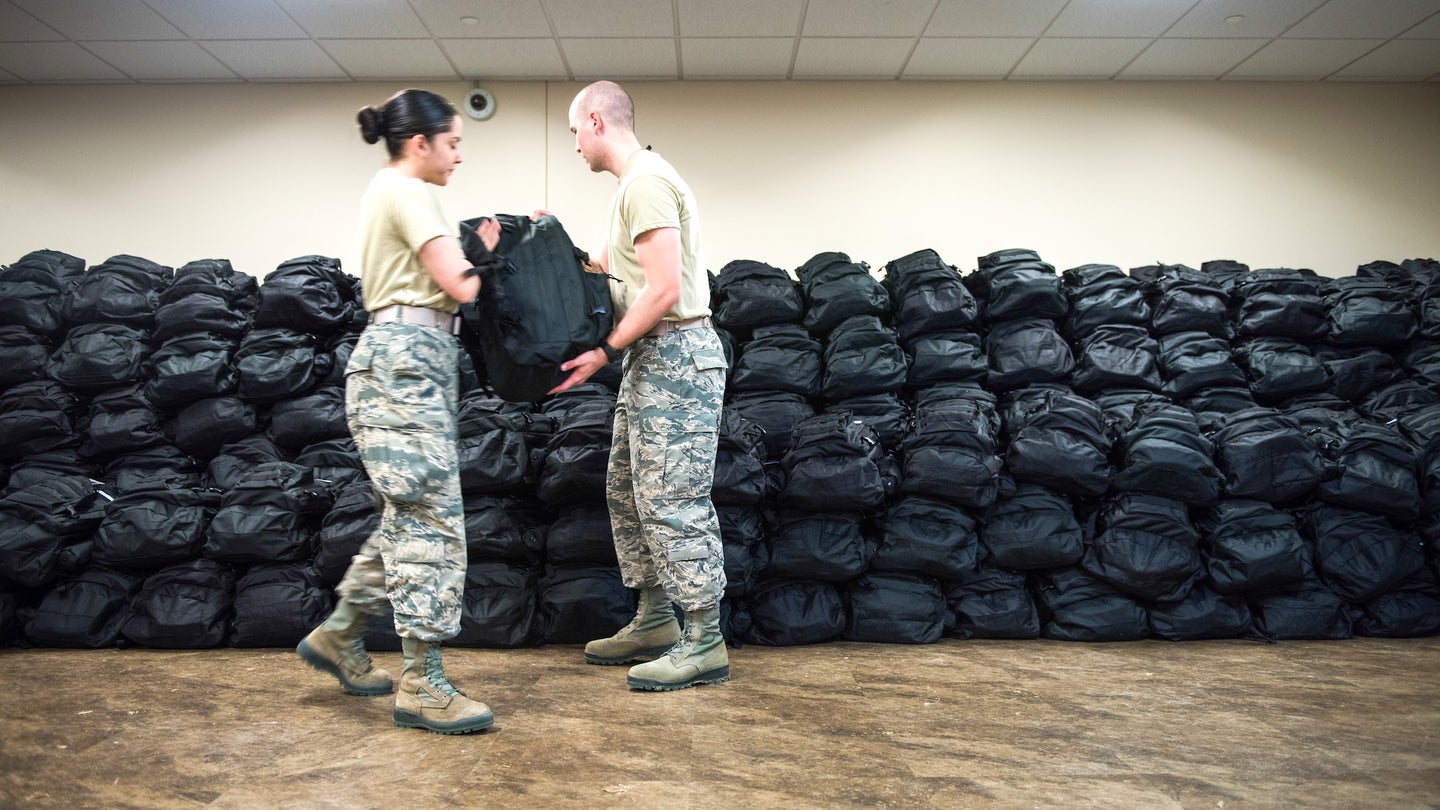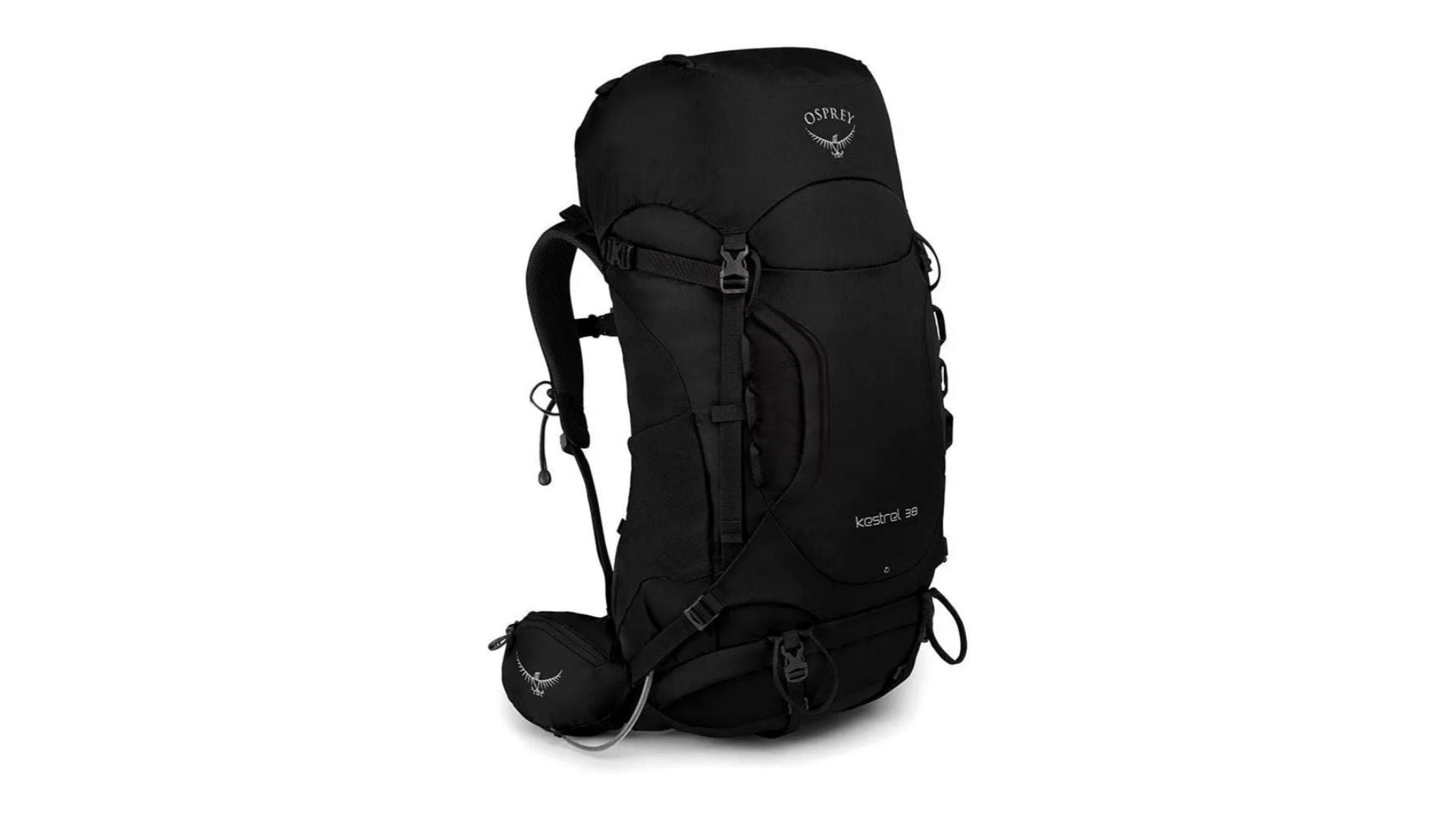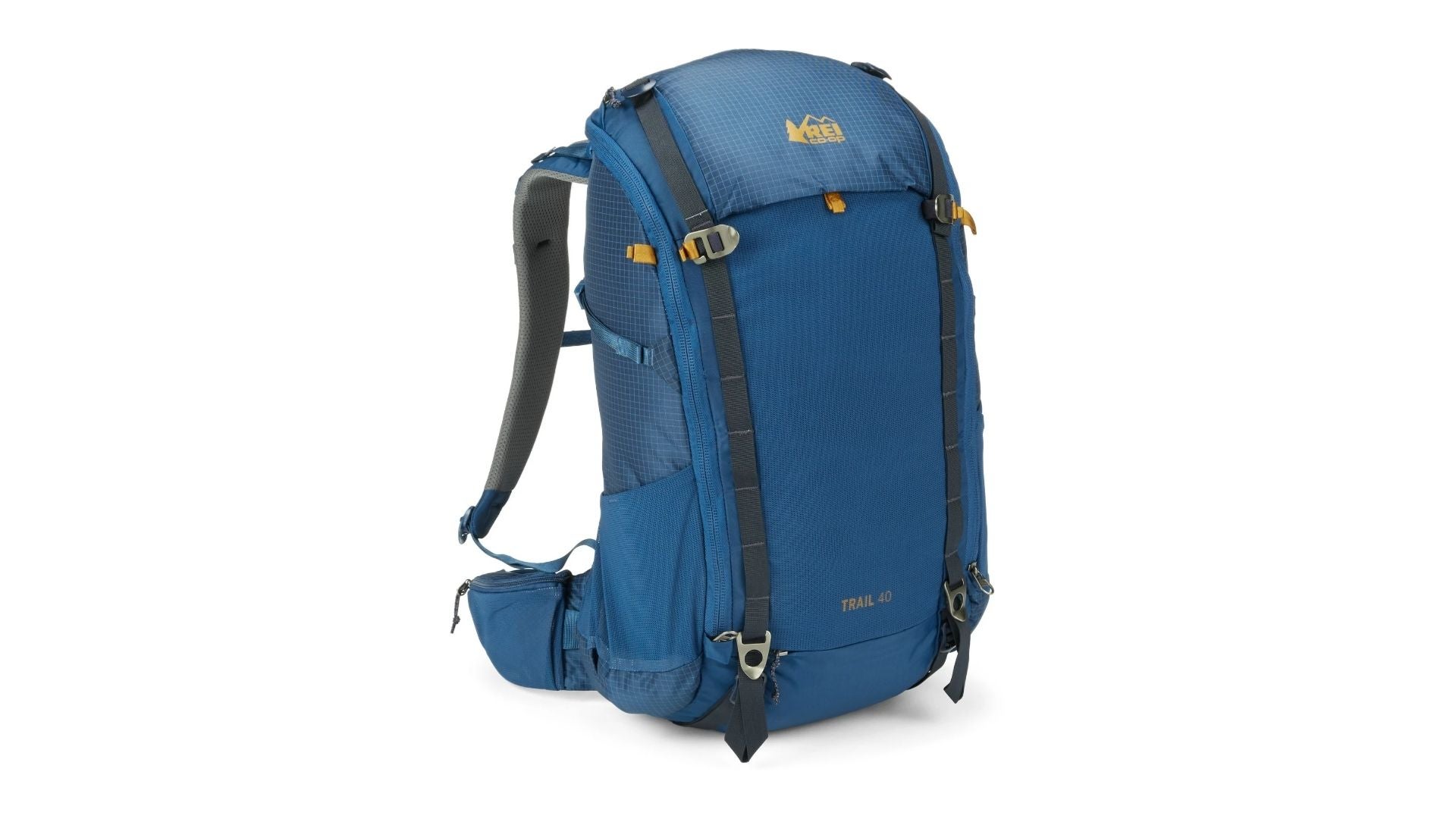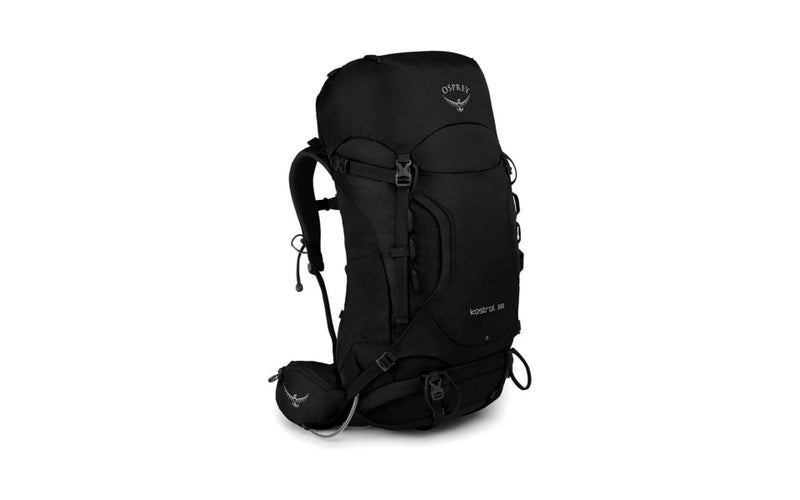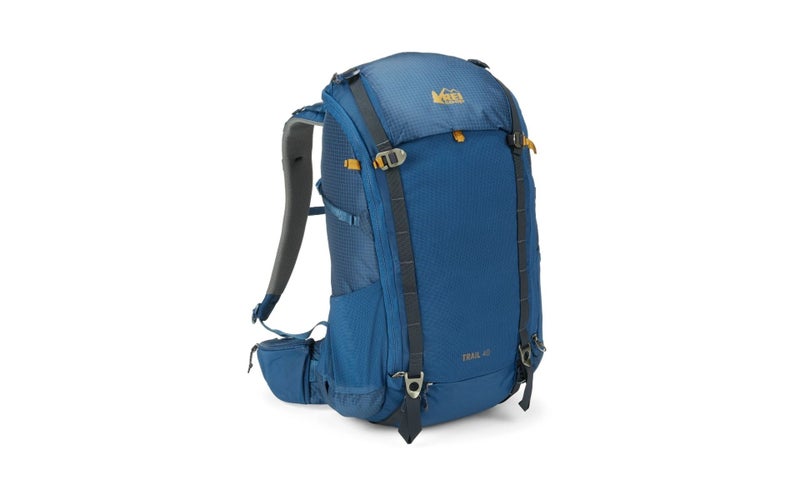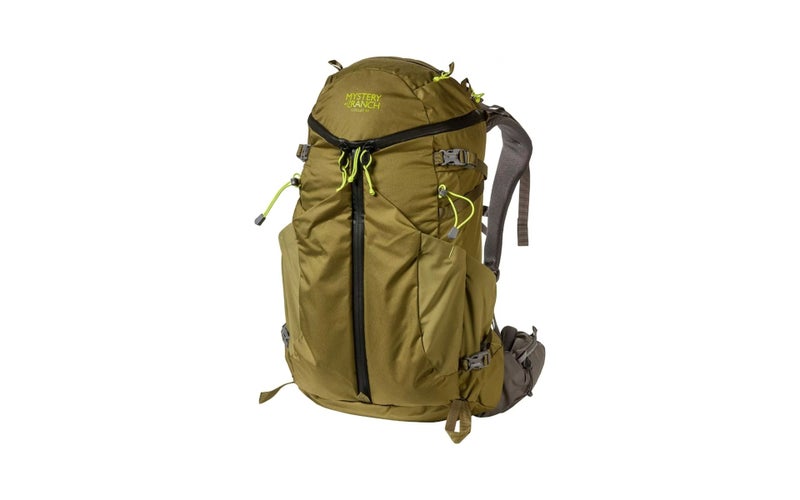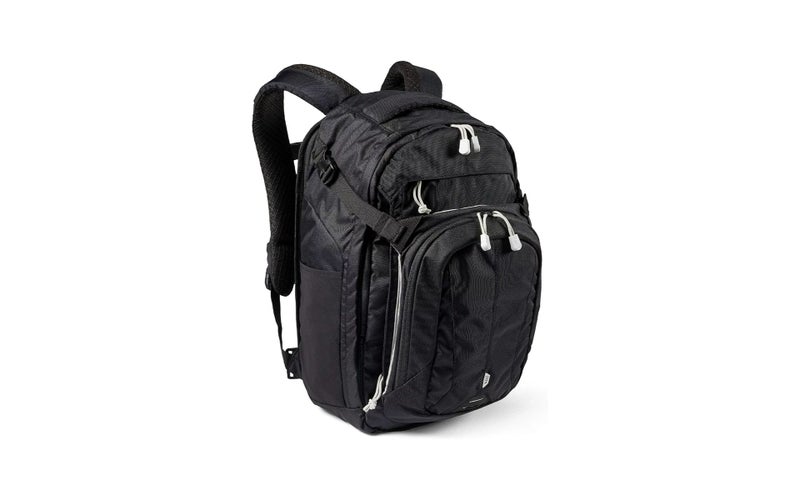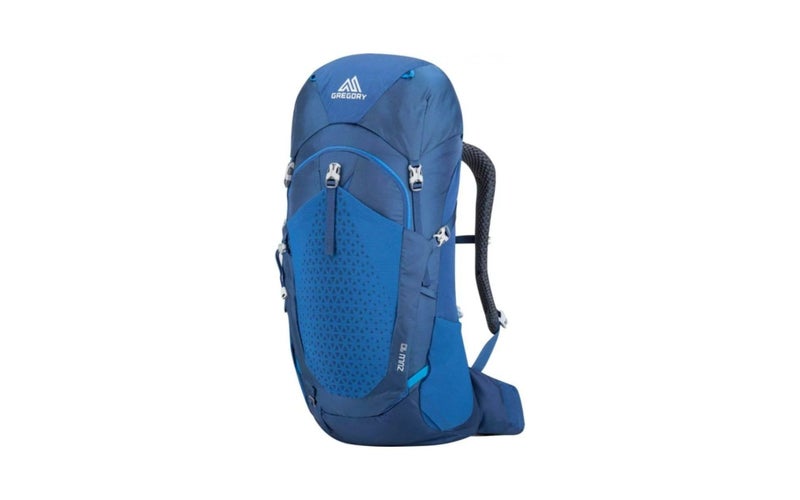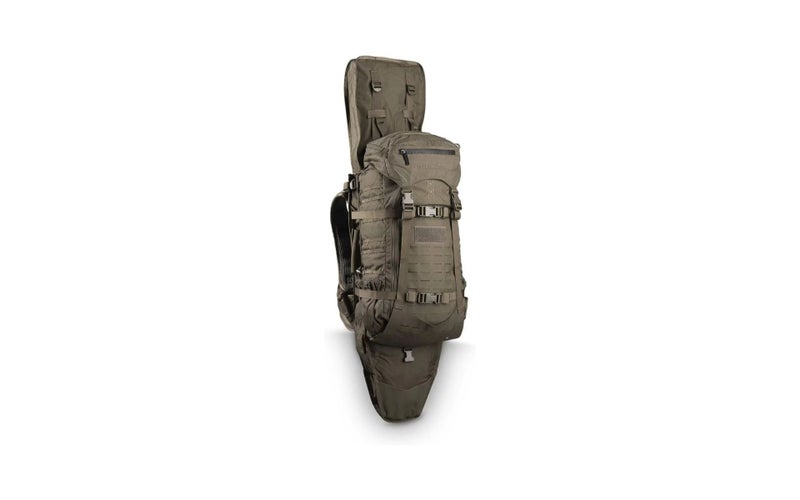We may earn revenue from the products available on this page and participate in affiliate programs.
In an emergency, a properly equipped survival backpack may be all that stands between life and death. Survival is a simple task that has become surprisingly difficult for the modern American. When chaos rules the day, obtaining food, water, warmth, and shelter become disastrously difficult for the unprepared. Throw in a medical emergency or an aggressive predator, and a miniature apocalypse can demolish your chances of survival. However, the trained and equipped individual with the right mindset (and quality gear) can overcome all.
While these packs do share some overlap with bug out bags, go bags, and EDC bags, a dedicated survival backpack is loaded with everything you need to survive a given situation and nothing more. These packs are tough for customers able to resist the weather, the environment, and your own rough treatment while being as user-friendly as possible. Not sure what that looks like? We got you covered.
- Best Overall: Osprey Kestrel 38
- Best Value: REI Co-op Trail 40
- Best for Wilderness: Mystery Ranch Coulee 40
- Best for Urban Settings: 5.11 Tactical Covrt18 2.0
- Best Lightweight: Gregory Zulu 40
- Best with Rifle Holder: Eberlestock G2 Gunslinger II
In the world of outdoor gear, Osprey is known for comfortable, high-quality gear, but the Osprey Kestrel 38 (and the women’s Kyte 36) makes for an excellent survival backpack. This tall, narrow pack lives up to Osprey’s reputation for toughness while offering features essential to a solid survival pack.
This tall, narrow pack comes in two sizes (S/M at 36 liters and M/L at 38 liters), both of which are fully adjustable for the perfect fit. In cooperation with the mesh, padded shoulder straps, and hip belt (with pockets), the Airscape back panel offers plenty of comfort and a high degree of breathability. The main compartment is constructed with water-resistant 210D and 630D Dobby Nylon, and includes top and bottom access via the attached hood and sleeping bag compartment (with removable divider).
The Kestrel 38 sports four side compression straps and plenty of pockets and gear attachment points (straps, loops, and daisy chains). The pack features an external hydration reservoir sleeve, dual external water bottle pockets, and a front stuff pocket. It sports subtle, dark colorways, and while it isn’t the most lightweight backpack in the world, it tips the scales at 3.22 (S/M) to 3.40 (M/L) pounds — pretty decent for a larger survival pack.
As well-rounded as this Osprey pack is, it isn’t perfect, but we found a few nits to pick. The Kestrel 38 and Kyte 36 do run a little on the pricey side, although there are far more expensive competitors on the market. The other downside is the included bright green rain cover, which may or may not be beneficial in certain situations due to its high visibility. Lastly, the fact that cargo capacity varies according to pack (i.e., torso), sizing may be a disappointment for some.
- Capacity: 36 to 38 liters
- Weight: 3.22 to 3.40 pounds
- Frame: Internal
- Weather resistance: Water-resistant construction, rain cover
- Main compartment access: Dual access
- Load-bearing hip belt: Yes
- Hydration reservoir compatible: Yes
- The Kestrel 38 (and women’s Kyte 36) provides an excellent combination of features, functionality, and ease of access. It also provides a solid value and is built to last.
Well-built
Highly customizable fit
Comfortable
Plenty of features
A little expensive
Cargo capacity varies by pack size
High-visibility rain cover could be a detriment in certain situations
Not everyone has $150-plus to spend on survival gear, but thanks to everyone’s favorite outdoor co-op, the REI Co-op Trail 40 fills the gap incredibly well. While it lacks high-end goodies, this pack has it right where it counts.
At 40 liters and three pounds, the Trail 40 is a relatively lightweight survival backpack, and it boasts a durable recycled nylon and nylon ripstop construction. The full-zip front panel and internal organizational features exude practicality and functionality, while the internal spring steel frame and padded suspension system efficiently transfer weight to your hips while maximizing the comfort quotient. Inside, this REI bag includes a simple pouch, pocket, and hydration reservoir sleeve, keeping with the (somewhat) minimalist theme. Externally, the pack is sleek but still includes compression straps, water bottle pockets, and gear attachment points (dual daisy chains, loops, and top and bottom gear straps). It also features a couple of external pockets, including a hidden mesh stuff pocket and hip belt pockets.
Clearly, REI put plenty of thought into the Trail 40’s design, sneaking in a rain cover and little conveniences, like lower zipper stowage loops, a keychain clip, and a light-colored interior lining. The water bottle pouches are easy to access, and the main compartment boasts four YKK zippers for easy access to the top or bottom of the pack. The shoulder strap foam holds up well over time, and the pre-curved foam hip belts strike a great balance between stiffness and give. The back panel also breathes well, despite its simple design.
Although this pack earns very few complaints, one drawback, in particular, does stand out. Due to its low-cost design, the Trail 40 lacks an adjustable suspension system. While it does come in two torso sizes, fine-tuning your fit will never be an option with this pack.
- Capacity: 40 liters
- Weight: 3.00 to 3.06 pounds
- Frame: Internal
- Weather resistance: Water-resistant construction, rain cover
- Main compartment access: Single access
- Load-bearing hip belt: Yes
- Hydration reservoir compatible: Yes
- The Trail 40 covers all the bases without breaking the bank. Its combination of toughness, organization, and comfort make this backpack a great value for any survivalist.
Reasonably affordable
Good value
Very practical design
Four-zipper main compartment
Non-adjustable suspension
Few survival packs earn as much praise as the Mystery Ranch Coulee 40, and we’re inclined to agree with the majority on this one. While it tips the scales at a relatively heavy 3.8 pounds, this pack can handle just about anything you throw at it while being incredibly comfortable and durable.
This 40-liter pack consists of a 330D Robic nylon body with YKK zippers, a composite internal frame stays, Mystery Ranch’s iconic three-zip design, and the company’s crowd-pleasing Futura Yoke suspension, one of the most comfortable and customizable suspension systems on the broader backpack market. Thanks to its overall design and allowance for micro-adjustments, this system makes it easy to forget you’re wearing the pack even when packed to the gills. To further ensure a perfect fit, the Coulee 40 comes in multiple macro sizing options in both men’s and women’s versions.
Although a bit expensive, the Coulee 40 employs a fairly minimalistic design philosophy but doesn’t skimp too much. It sports dual external water bottle and stretch pockets, two hood pockets, four side compression/lash straps, multiple external gear attachment loops, and an internal hydration reservoir sleeve. The padded hip belt boasts unusually generous pockets, and both the belt and sternum strap are removable.
The Coulee 40 does have a few noteworthy drawbacks besides its heft and price tag. Most notably, it lacks a handful of features commonly found on similar backpacks, such as internal organizational pockets (somewhat mitigated by the triple-zipper setup), daisy chains, and bottom compression/lash straps. A rain cover is available but must be purchased separately.
- Capacity: 40 liters
- Weight: 3.8 pounds
- Frame: Internal
- Weather resistance: Water-resistant construction (rain cover available separately)
- Main compartment access: Single access
- Load-bearing hip belt: Yes
- Hydration reservoir compatible: Yes
- Though a little on the hefty side, the Coulee 40 may just be the best combination of capability, comfort, and durability on the survival backpack market today.
High-quality construction
Highly customizable fit
Extremely comfortable
Expensive
A little heavy
Lacks a few convenient pack features
If you need a chameleon-like survival backpack, you will be hard-pressed to find a better candidate than the 5.11 Tactical Covrt18 2.0. Blending in on the streets, in the classroom, and on the trail, this pack boasts more than a few features worthy of your attention.
At 32 liters and 2.34 pounds, the second-generation Covrt18 is a small, lightweight survival bag that is built to last. The pack consists of water-resistant 500D and 840D nylon (available in four colorways) and features four compartments (main, hydration reservoir, admin, and CCW) and one external stuff pocket. The main compartment features a clamshell design with two mesh pockets, and the hydration reservoir compartment doubles as TSA-friendly laptop storage.
Despite the limitations of its low-profile design, this 5.11 pack also boasts a number of helpful features, including dual compression straps and water bottle pouches, a frame-like rigid back panel, and a yoked, padded, and ventilated suspension system with sternum strap. The Covrt18 2.0’s dimensions allow for an excellent range of motion, and the handful of little details, like the Velcro-equipped CCW pocket, Hypalon gear loop, and flex cuff channel, are nice touches for some end users.
Besides running a little small for a survival pack, the Covrt18 2.0 does possess a few cons. Most notably, this one-size-fits-all backpack lacks an adjustable suspension as well as many load-bearing features, including a (true) frame, load lifters, and hip belt. That said, the rigid back panel will still support a good bit of weight, and the bag comes with hip belt attachment points should you need one.
- Capacity: 32 liters
- Weight: 2.34 pounds
- Frame: Internal
- Weather resistance: Water-resistant construction
- Main compartment access: Single access
- Load-bearing hip belt: No, but will accept one
- Hydration reservoir compatible: Yes
- The Covrt18 2.0 lives up to its name and features tough construction, a great price tag, and plenty of organizational features not found on other survival packs.
Low-profile design
Lightweight
Affordable
Sturdy build
Small cargo capacity
Non-adjustable suspension
Lacks many load-bearing features (heavy-duty frame, hip belt, load lifters, etc.)
Looking for a full-featured survival pack that won’t break your back? Then take a good look at the Gregory Zulu 40. Weighing in under three pounds, this lightweight pack still manages to cover all its bases and a little more with its comfortable and convenient features.
This Gregory pack features a steel alloy, fiberglass, and HDPE internal frame (rated to 35 pounds), a 210D nylon, 420D nylon, and 135D polyester body, and a free-floating suspension system that is both well-ventilated and highly adjustable for fit. To ensure the best possible fit, the Zulu 40 (and the female-equivalent Jade 38) comes in two sizes: S/M and M/L (XS/S and S/M for the Jade 38).
The Zulu 40 (and Jade 38) features dual main compartment access via the top drawstring closure (with lid) and the front zippered panel. It also includes plenty of convenient extras, such as an external mesh stuff pocket, dual external water bottle pouches with compression strap pass-throughs (which can be difficult to access with the pack on), hip belt pockets, and an included rain cover. As expected, this pack is also hydration reservoir-compatible and has a good number of external pockets and gear attachment points.
The Zulu 40/Jade 38 pack series do have cargo capacities that vary slightly according to pack size, a noteworthy drawback for some. Also, tall, skinny dudes may find that the Zulu 40 may not provide the best fit for them. For some, the high-visibility rain covers could be a drawback in some scenarios.
- Capacity: 38 to 40 liters
- Weight: 2.90 to 2.93 pounds
- Frame: Internal
- Weather resistance: Water-resistant construction, rain cover
- Main compartment access: Dual access
- Hydration reservoir compatible: Yes
- Load-bearing hip belt: Yes
- The latest version of the Zulu 40 manages to combine toughness and low weight into a single pack with few compromises in the areas of comfort and capability.
Lightweight
Breathable suspension
Highly adjustable fit
Dual access to main compartment
A little expensive
Cargo capacity varies by pack size
May not be the best fit for tall, skinny dudes
Survival backpacks destined for tactical use have to be stronger, less restrictive, and easier to use than their civilian counterparts, and the Eberlestock G2 Gunslinger II is just such a pack. While extreme durability earns an automatic weight penalty, the tradeoff is a pack you can stake your life on.
At its core, the G2 Gunslinger consists of an internal aluminum frame with a tank-like body and an adjustable suspension system. The dual access main compartment (drawstring top and zippered side panel) employs a long, narrow profile to maximize the range of motion and features no unnecessary external bumps or bulges, but tons of MOLLE mounting points. External accessories include a lid (with pocket), dual cinching water bottle pockets, quad compression straps (two vertical and two horizontal), three carry handles, and a wraparound MOLLE panel to secure gear to the front or bottom of the pack. Inside, it sports dual hydration reservoir sleeves.
The Gunslinger’s main highlights are the tuckable rifle scabbard and adjustable suspension system. The scabbard can accommodate virtually any long gun, including AR-15s, in either muzzle-up or muzzle-down orientations. The customizable suspension system features well-padded components and distributes the pack’s weight very well. Both the back panel and shoulder straps feature air channels and mesh-covered pads that maximize ventilation. As such, neither surface fully compresses clothing, thereby preserving the warming abilities of loft insulation in cold weather gear.
Regrettably, this pack is high on both the weight and expense indexes. At 6.5 pounds, the G2 is far and away the heaviest pack on this list. The Gunslinger also lacks a rain cover, although one can be purchased separately.
- Capacity: 44 liters with 10-liter scabbard
- Weight: 5.5 pounds with 1-pound scabbard cover
- Frame: Internal
- Weather resistance: Water-resistant construction (rain cover available separately)
- Main compartment access: Dual access
- Load-bearing hip belt: Yes
- Hydration reservoir compatible: Yes
- While not the lightest bag on this list, this Eberlestock pack comes radio-ready and can accommodate a long gun with an optional rifle scabbard without eating into your storage space.
High-quality construction
Customizable fit
Plenty of MOLLE mounting points
Tuckable scabbard provides quick access to an AR-15 and other long gun
Very expensive
Very heavy
Rain cover requires separate purchase
Things to consider before buying a survival backpack
Survival conditions
Sometimes, the simplest things are the easiest to overlook. Before buying a survival backpack, think about what conditions you are likely to endure during a survival situation. Start by focusing on three factors: environment, duration, and party.
Consider your likely survival environments (yes, that’s plural). Are you likely to encounter urban, suburban, or rural emergencies, or some combination thereof? What about local geography, weather conditions, weather emergencies, local wildlife, etc? Anticipate if you are likely to endure days, weeks, or months on your own, and pay attention to how many people you’re likely to have with you, especially those who rely on you for care, such as children or elderly parents.
Types of survival backpacks
Very few manufacturers produce dedicated “survival backpacks,” so selecting a survival pack requires a case-by-case evaluation of various backpacks. Shopping around could net you an emergency-ready backpack that may originally have been designed for hiking, backpacking, “tactical” use, or even school. That said, survival packs, like bug-out bags, can be classified according to their intended emergency setting: urban, wilderness, and tactical.
As the name implies, urban survival packs look right at home in a metropolitan or suburban setting with repurposed school and EDC bags filling the role well. Compared to urban bags, wilderness backpacks tend to be tougher, lighter, and more “technical” (i.e., utilitarian) in their design and features; hiking and hunting backpacks fill this role most often. Tactical or military survival packs are heavier-duty (and heavier) than wild survival bags and have lots of PALS webbing (a.k.a., MOLLE) to accommodate extra gear.
Key features of a survival backpack
A true survival backpack includes plenty of features found on other packs, but their quality matters more than most. Additionally, how a specific collection of features comes together can determine a pack’s suitability for emergency survival. As such, pay close attention to a backpack’s design, focusing on ease of access, organization, external gear attachment points (including placement), and water storage options, such as a hydration reservoir pouch.
Other critical features include a backpack’s weight, durability, and cargo capacity (usually 30 to 45 liters). Since survival packs use thick, tough materials to attain greater durability, they tend to be on the heavier side, so bags weighing around three pounds can be considered relatively lightweight. Weather-resistant features, such as a rain cover, waterproof zippers, and waterproof construction materials can literally save your life by protecting critical gear. A quality suspension system can make or break a pack — and you. Look for a backpack with load lifters, padded and contoured shoulder straps, and a load-bearing hip belt. If you carry a larger load, take a close look at framed packs. Finally, make sure the pack fits you properly; true survival packs are not one-size-fits-all affairs.
Pricing
By nature, survival backpacks often demand a bit more from your wallet than other packs. A survival pack needs to withstand some tough situations, and its materials, features, and overall build quality tend to cost a good bit more than your typical Jansport. As such, plan to drop at least $100 on an entry-level bag. High-end bags will cost you another Benjamin Franklin or two, but a $200 to $300 backpack should last you many, many years of hard use.
FAQs about survival backpacks
Q: Is there a difference between a survival backpack and a bug-out backpack?
A: Yes and no; the backpacks themselves can be identical. The contents inside are what differentiate a survival backpack from a bug-out backpack, although to the untrained individual, the differences may be almost indistinguishable.
Q: What should you always carry in a survival pack?
A: Your survival backpack loadout will depend on your specific environment and situation. That said, all survival packs should include tools for a water filter or purifier, fire starters, shelter (skip the tent), medical care, comms, essential tools (including nav gear, like a map and compass), illumination, hygiene essentials (primarily baby wipes), food, and clothing essentials (mainly a skivvy roll and weather protection).
Q: How much weight can a survival backpack hold?
A: Backpack weight capacities vary from manufacturer to manufacturer, although higher-end packs can handle up to 35 pounds. Your loadout (including the pack) should weigh no more than 20 percent of your body weight, so look for a pack that can handle slightly more than that.
Q: How long will a survival backpack last?
A: A survival backpack’s lifespan will depend heavily on many factors. A lightly loaded pack that never gets used could last indefinitely, while an overloaded pack that gets thrown around on a regular basis likely won’t last more than a year or two. Of course, build quality also plays into the equation, so predictably, higher quality will last longer than a cheaper one.
Final thoughts
At the end of the day, the best all-around survival backpack we found is the Osprey Kestrel 38. It manages to combine trail-friendly characteristics, good weight-bearing features, and a user-friendly design without compromising on durability, comfort, or convenience. While it does run a little on the expensive side, the Kestrel 38 (and women’s Kyte 36) offers a good bang for your buck, making it a tough act to beat.
Methodology
When selecting these packs, I started by looking for packs in the 30- to 45-liter range, with 40 liters being the sweet spot, and I focused primarily on hunting, hiking, and backpacking packs. High build quality, durability/toughness, load-bearing features, a padded and ventilated suspension system, hydration reservoir compatibility, and water resistance were absolute musts. I also placed a premium on adjustable suspension systems, easy access, interior organization, low weight (under 3.5 pounds), multiple torso sizes, including rain covers, and well-placed external gear attachment points, although packs lacking one or two of these were not completely ruled out.
This may come as a surprise to some, but very few (no?) manufacturers sell or market dedicated survival backpacks beyond the occasional pre-built option. As such, I started this project with lots of research planned. Thankfully, Task & Purpose’s own Steven C. Harbert Jr. is an Army SERE instructor who provided me with plenty of details to fill in some gaps. For outside research, I leaned on information and reviews from AK Backpacking & Outdoors, Backcountry Exposure, CNET, The English Hiker, Garand Thumb, GearWeAre.com, gideonstactical, Her Packing List, Off the Reservation Tactical, Outdoor Crunch, Paul’s Wanderings, Pepper Jack Adventures, Recoil Offgrid, REI, Survival World, Tiborasaurus Rex, Trailspace, and WanderinThru. I also leaned a bit on my own experience with the 5.11 Tactical Covrt18 2.0.
